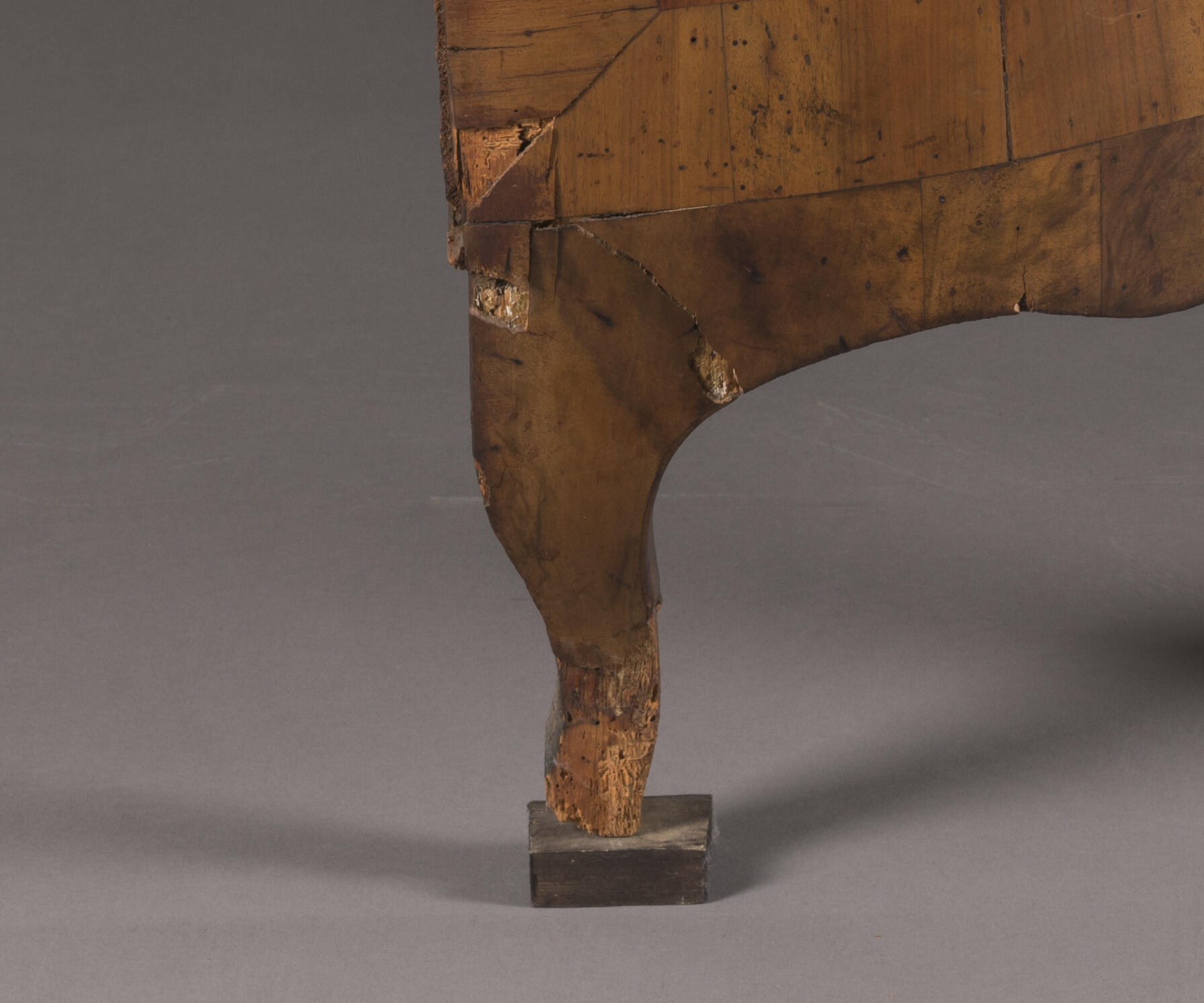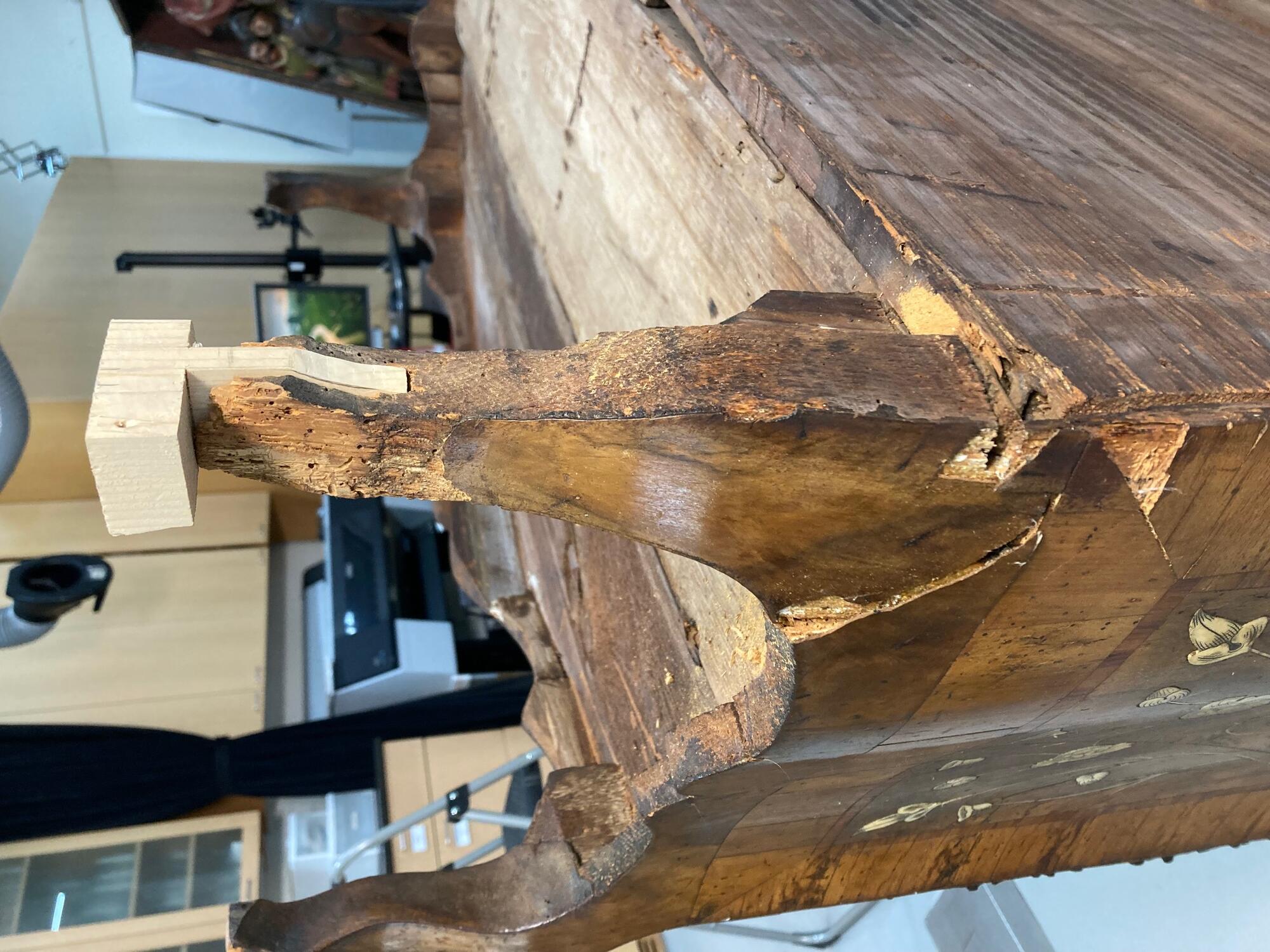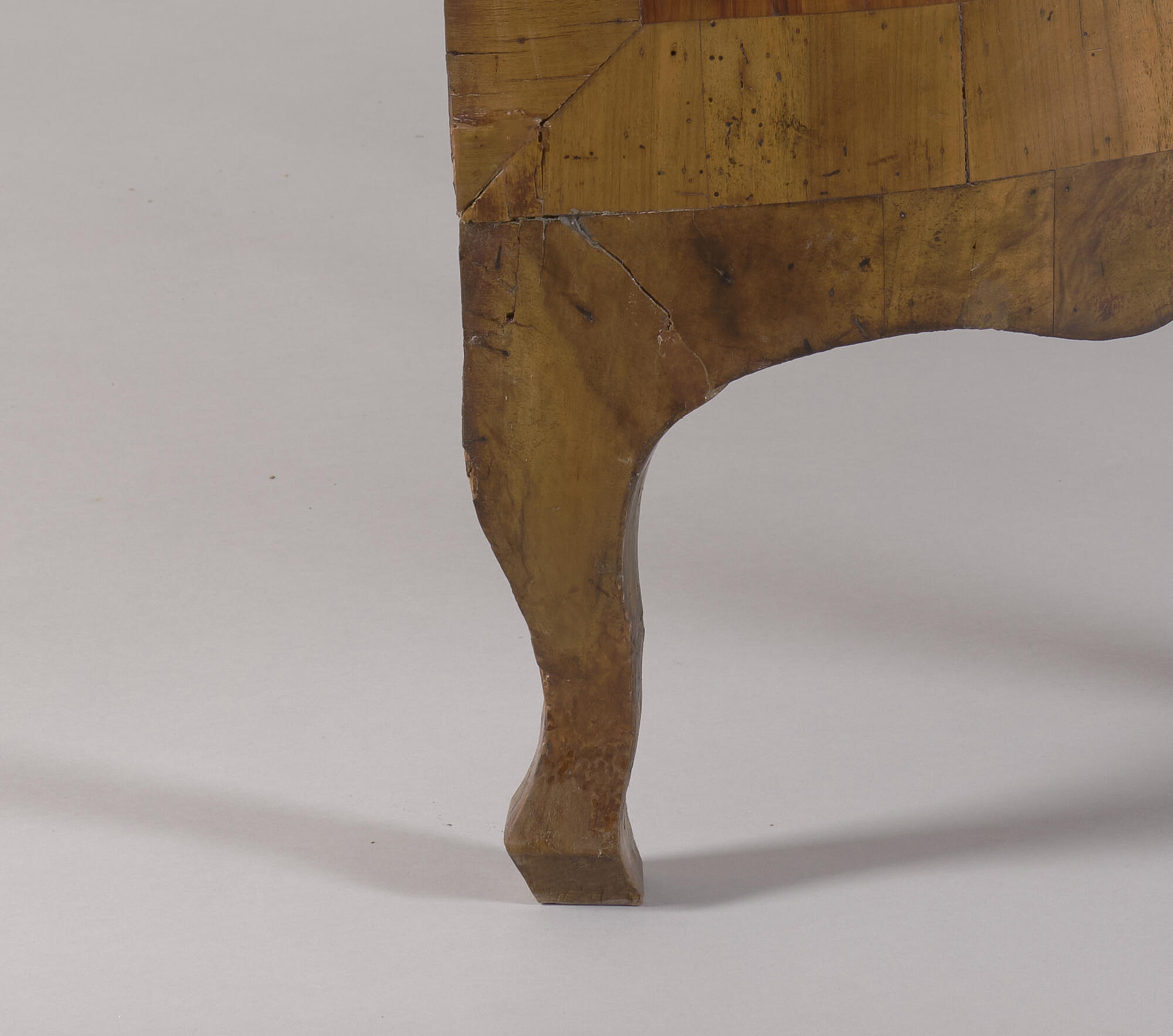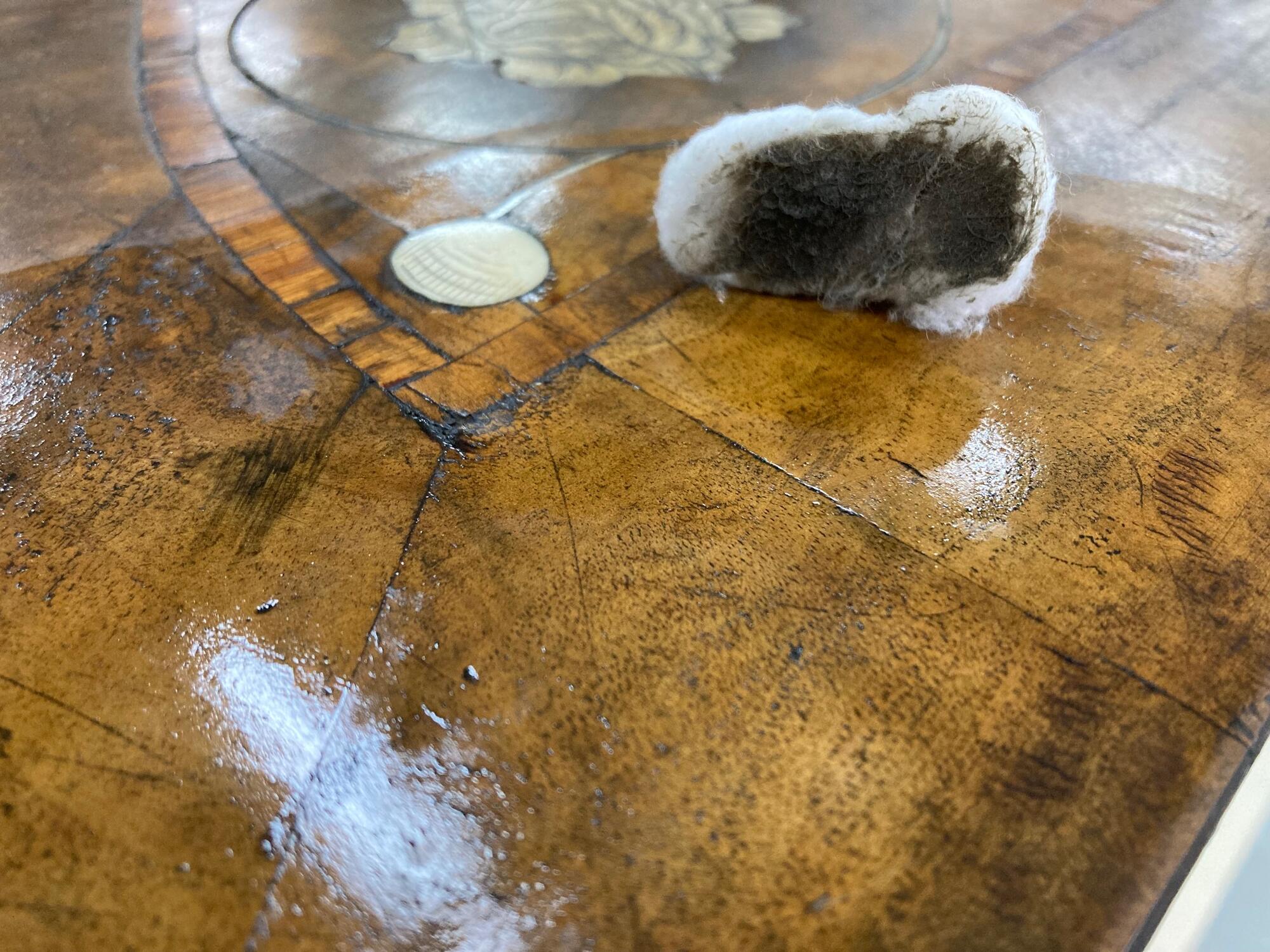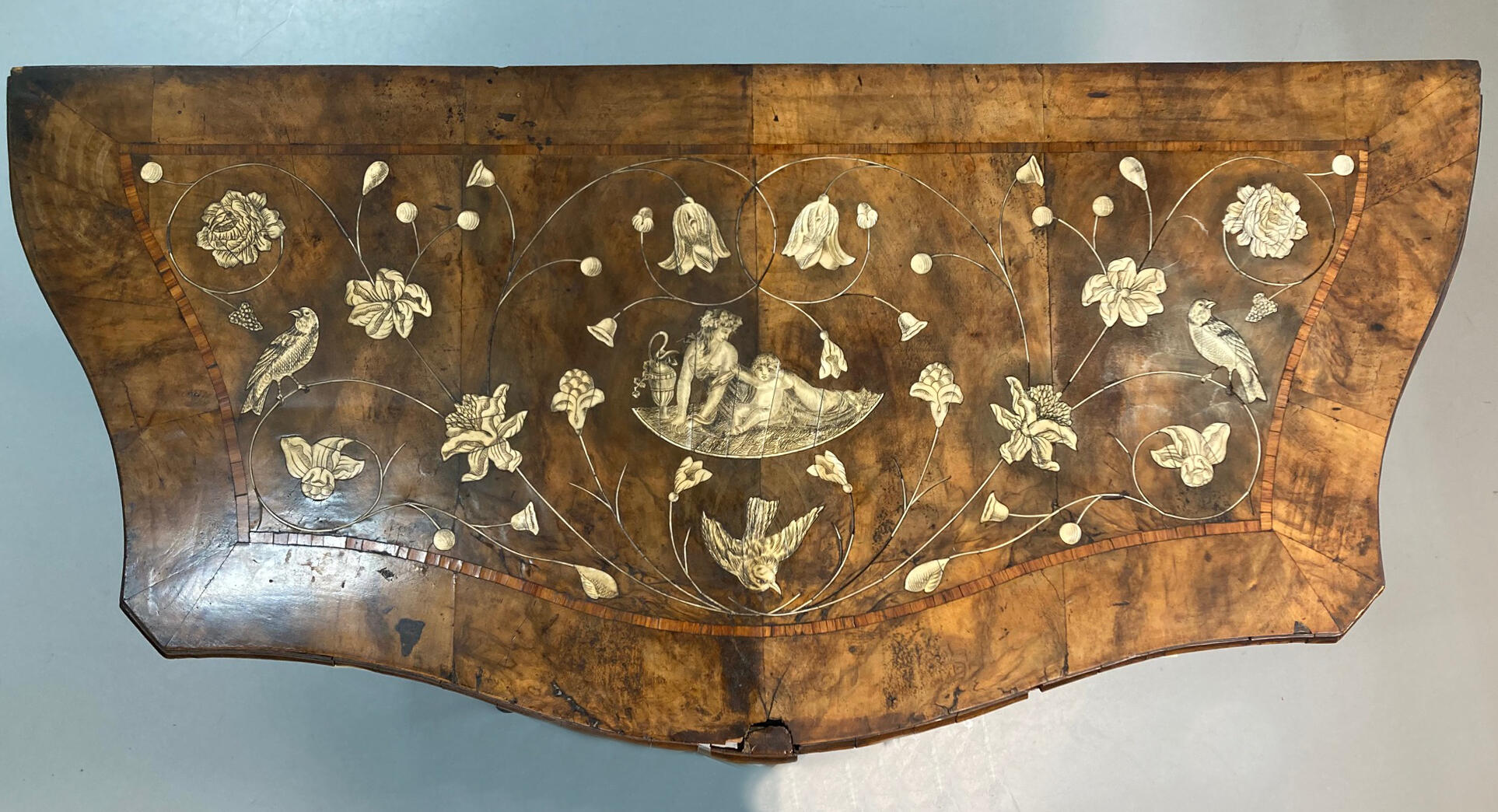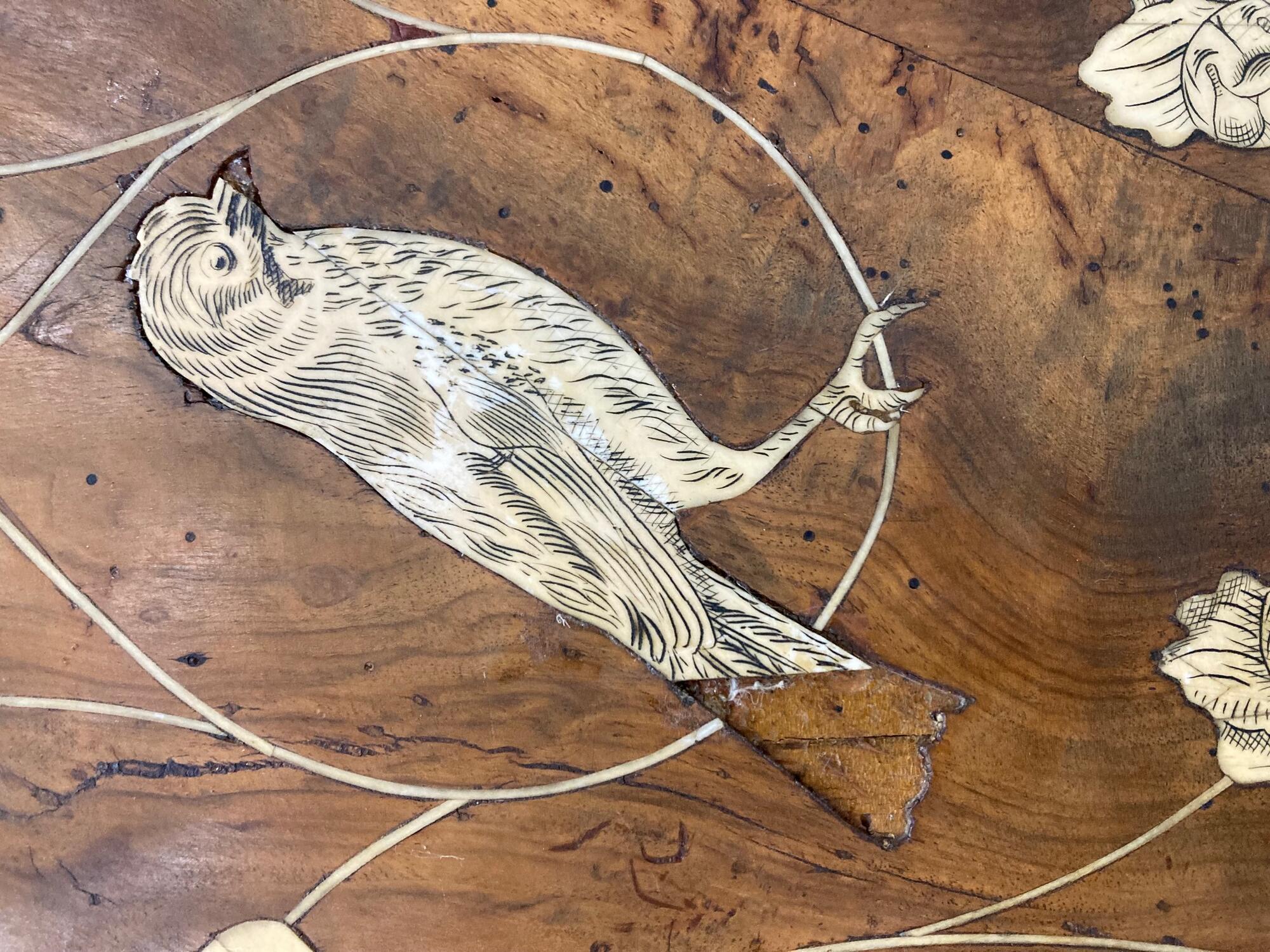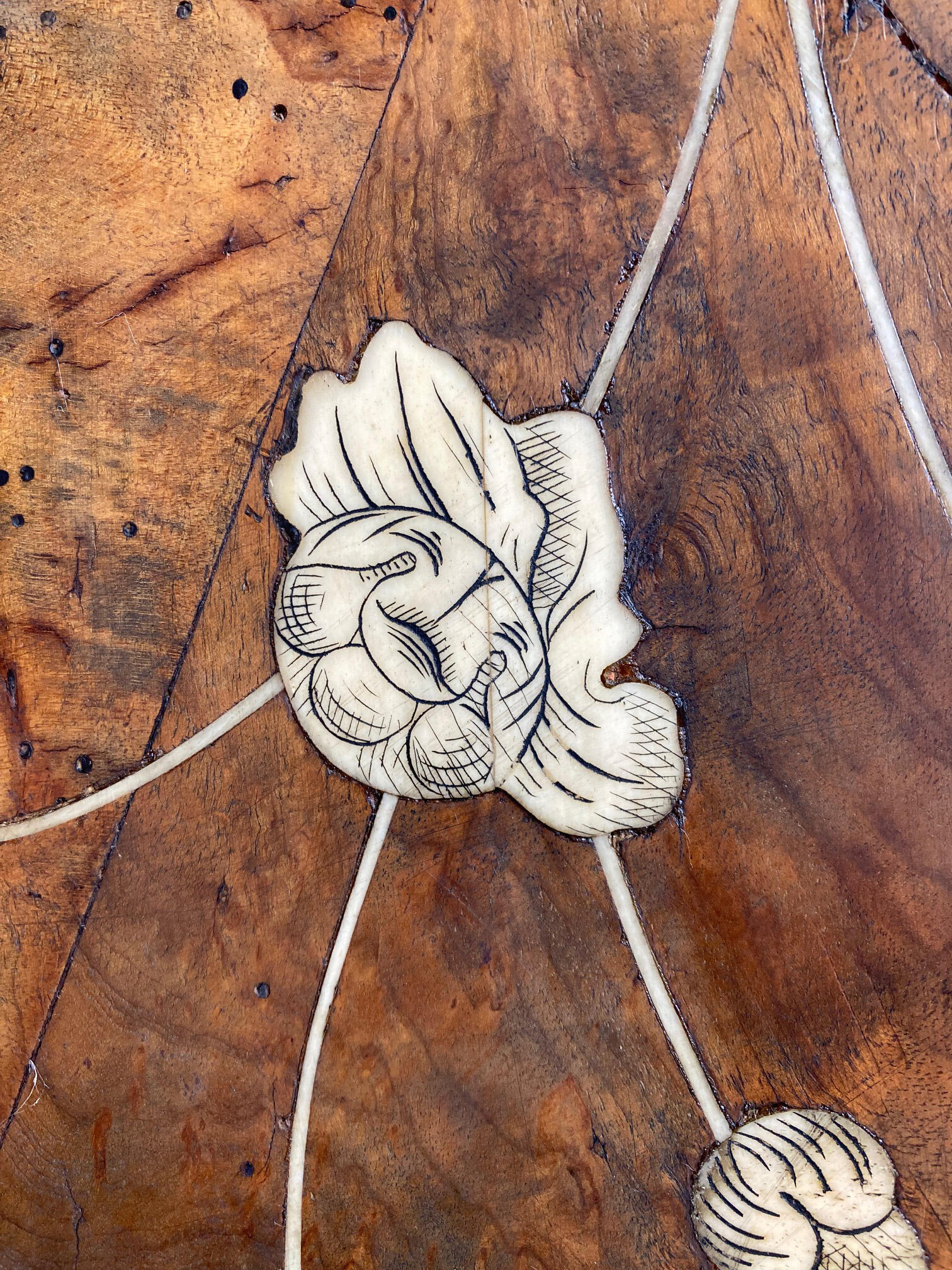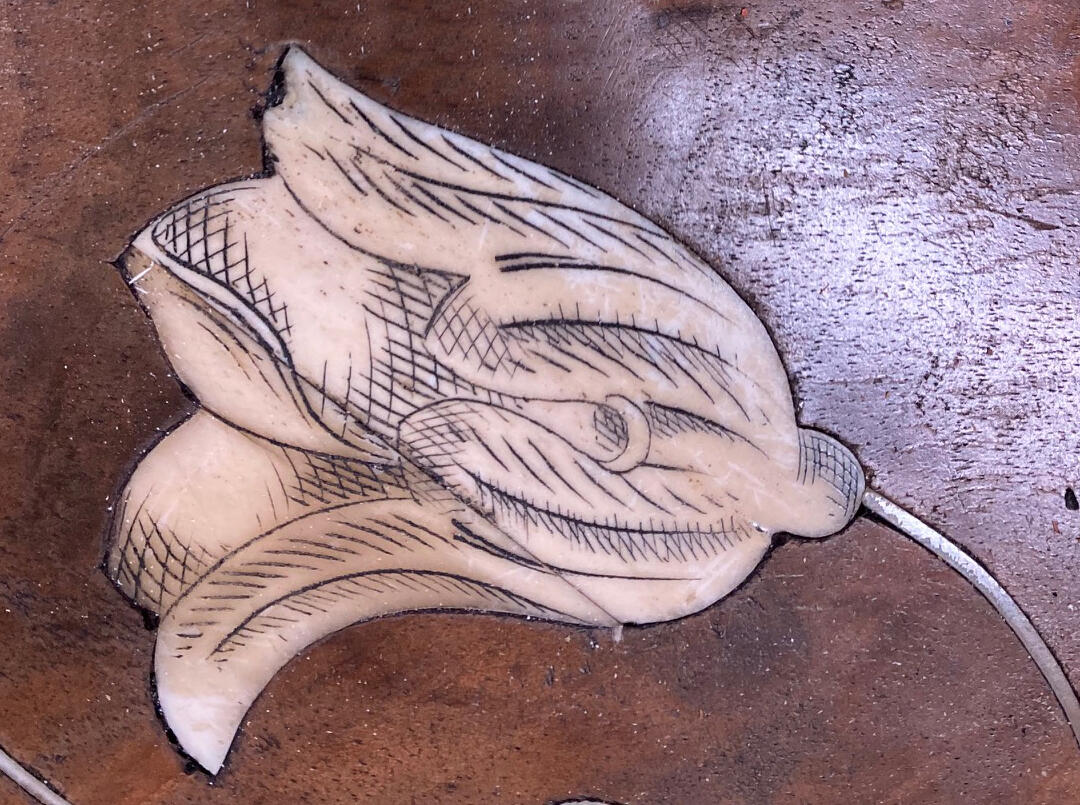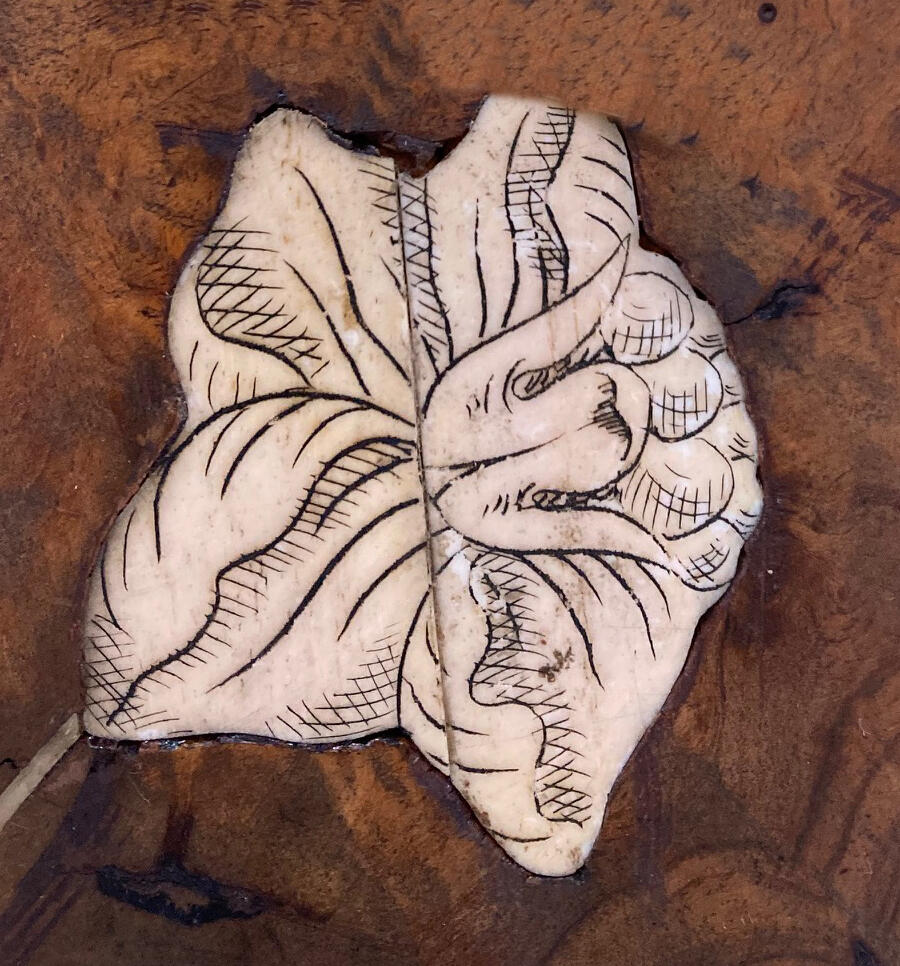Visitors to the Isabella Stewart Gardner Museum often seek out the Dutch Room for the remarkable pieces with which Mrs. Gardner furnished it, and to see first-hand the empty frames left behind by the thieves on the night of March 17, 1990. It’s doubtful that any visitor has ever gone to the room in search of the chest of drawers just to the right of the room’s entrance off the grand stairs. This is just as well, because, until recently, it wasn’t looking its best.
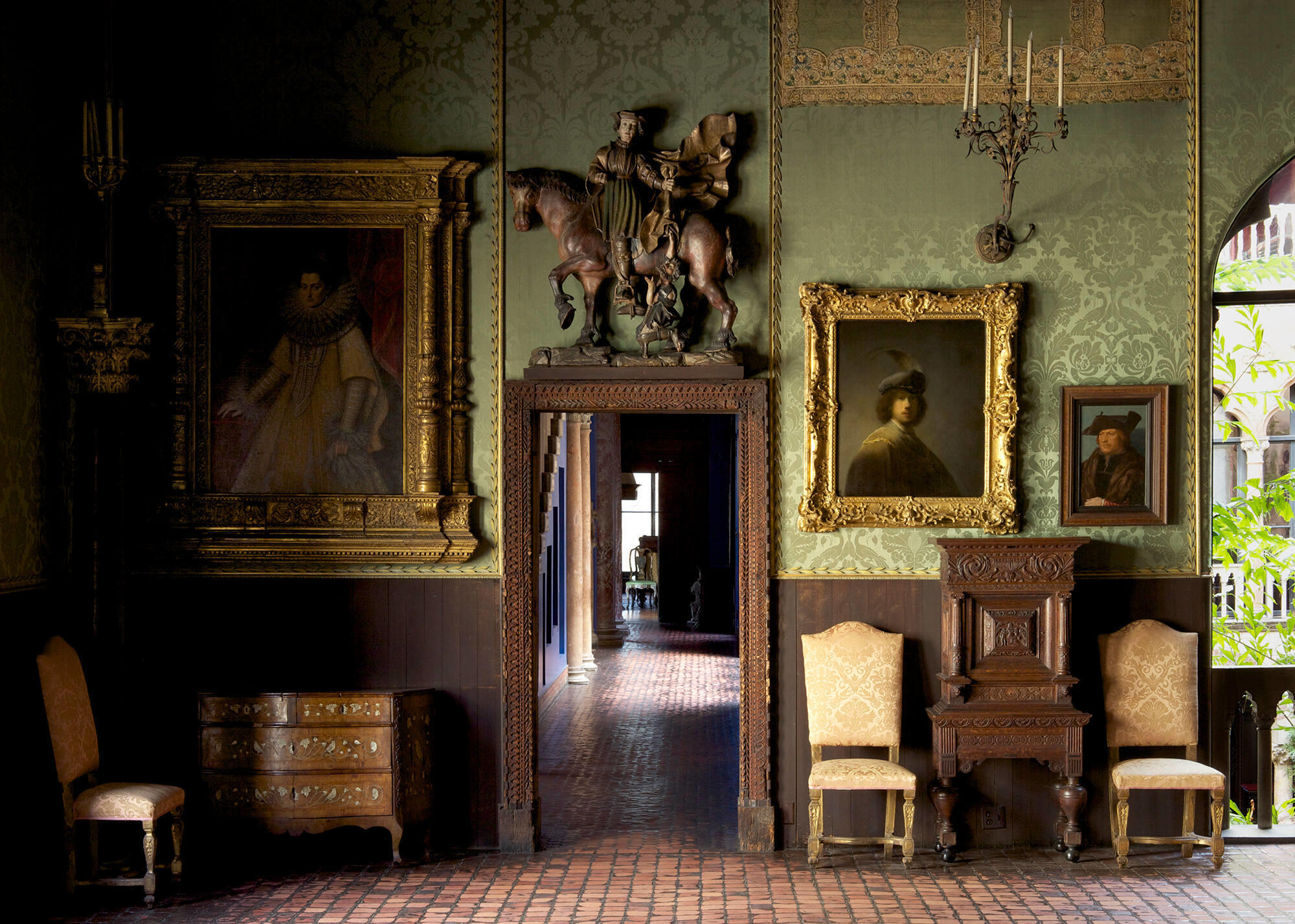
Photo: Sean Dungan
The Dutch Room, showing a Venetian chest of drawers, 1750–1799
Had a visitor paused they might have noticed that the remnant of one leg was propped on a block of wood, the birds and flowers inlaid in ivory (maybe) were missing tails, beaks, petals and stems, and large chunks of veneer were dangling or had gone missing. In short, the chest was best viewed in low light.
Enter Conservation! Replacing the missing rear foot was a requirement: any piece designed to sit on four feet needs four feet. If one of those feet gets eaten away by bugs (long gone) the piece isn’t going to be happy because parts tend to sag and drawers misbehave. As you can imagine, the foot loss was irregular (bugs do not eat in a straight line). Replacing it entailed burying a structural slip tenon (also known as a loose or floating tenon) into the degraded substrate behind the show surface. Then, piece by piece was added until there was enough for the profile to be shaped.
Cleaning and clarifying the finish was a slow, steady process of removing centuries of grime using a pH-adjusted aqueous solution to brighten the contrast between the veneers and the inlay. Then the faded color of the rosewood banding framing the top (and the drawers) was enhanced to bring it back to where it belonged.
Correcting the foot and the finish were necessary and noticeable, but not really anything to make your heart race. But those bedraggled birds, flowers and keyhole escutcheons: that’s when it got interesting! Always assumed to be ivory, the inlay was actually done in bone. The identification was courtesy of Dan Kirby, a conservation scientist.
There was some leftover bone from another project some years past (Conservation saves some weird stuff) so materials weren’t a problem but just exactly what was missing? Inlay by definition fits flush in a cavity cut into the surrounding surface so it stands to reason that if part of the inlay is missing, the shape of the empty cavity should tell the tale. But in this case the cavities weren’t all that precise so the shape of the missing pieces wasn’t a slam dunk. Even given a decent approximation of the shape, the etched and inked details of the shapes were unclear.
Enter Collections Photographer, Amanda Guerra, a self-described bird nerd. She studied the birds, did some research, and reported: “This might sound crazy but I believe the side birds are Eurasian Jays. The inlay has these little dots by their belly which could resemble the blue and white dots they have, plus the crown tuft and the eyes. And they were documented the first time in Italy around the 1750s which is when the furniture is dated. They are probably life size on the chest.”
Inspired by that in-house resource, we invited the Gardner’s Horticulture team to have a look at the various petals and blooms (recorded in the catalogue entry simply as “flowers’). It was like watching a ping pong match as they roved the piece, batting the possibilities back and forth. The list included narcissus, daffodil, peony, tulip, St. John’s Wort, acorn, berry, and several that they pronounced “fantasy” —not something that appears in nature.
With that information in hand, the bone veneer was fitted into the missing cavities. The blank white replacements without toning or the engraved detailing were glaring in their own right. After toning the blanks to blend with the original segments, the engraved detailing was traced on Mylar over intact areas and then repeated on the new inlay with micro-fine archival pens.

Isabella Stewart Gardner Museum, Boston (F21n2)
Detail of the Venetian chest of drawers, 1750–1799, showing the repaired Eurasian jay after the conservation treatment, 2023
When next you visit the Dutch Room, pause at the chest of drawers and enjoy the Eurasian Jays and the peonies and narcissi. They’re lovely.
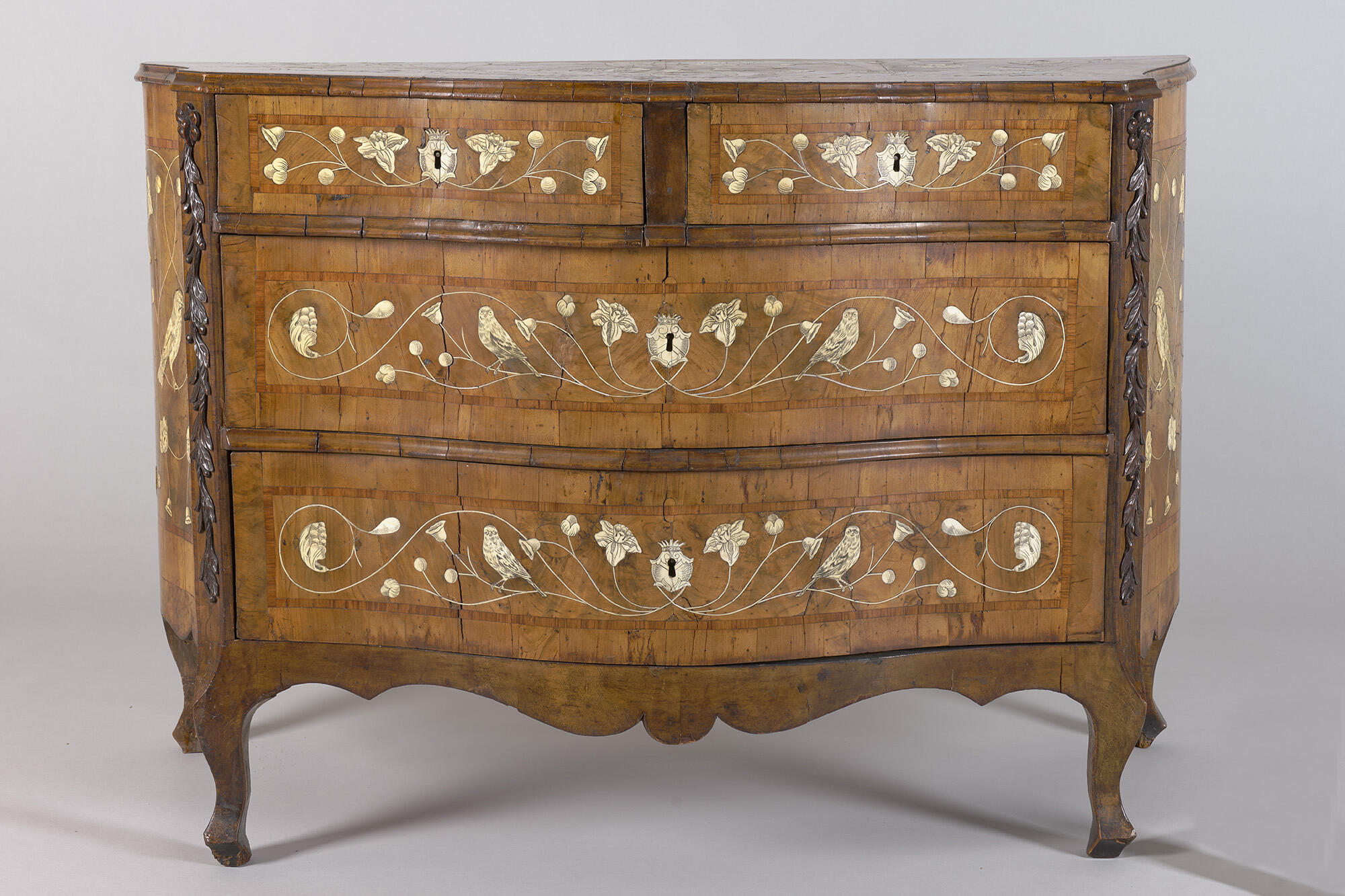
Isabella Stewart Gardner Museum, Boston (F21n2). See it in the Dutch Room.
Italian, Veneto, Chest of Drawers (Cassettone), 1750–1799 (inlays: early 1800s). Walnut, pine, rosewood, and bone with bronze fittings, 82.9 x 122.8 x 57.9 cm (32 5/8 x 48 3/8 x 22 13/16 in.) After its 2023-2024 conservation treatment
In September 2024, the Gardner Museum announced plans for a multi-year restoration of the Dutch Room. The floor-to-ceiling conservation project will encompass works of art and architectural elements throughout the gallery. Stay tuned for more information about the refurbishment, the last major gallery to undergo a full restoration as part of the Museum’s Strategic Plan.
You May Also Like

Read More on the Blog
Secrets of the Gardner Museum’s Furniture

Read More on the Blog
Conservation of the Long Gallery Stools

Gift at the Gardner: Buy A Book
Furnishing A Museum
